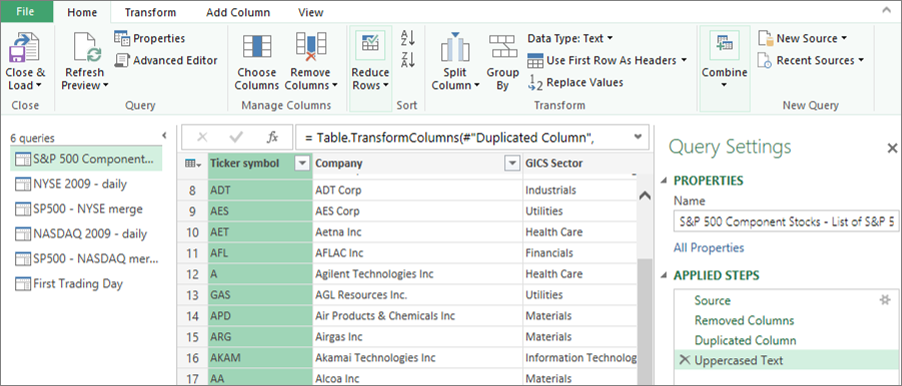

This is pretty simple and in our case our csv files have the correct format thus not requiring any transformation steps to be done to it other than the ones that were automatically done by Power BI / Power Query. To finish things off, you can just click on Edit so we can go straight to the Power Query Editor. This is a pretty straightforward process where we can just select our data source from the “Get Data” window and go through the import process which will display a simple browse window so you can select your file and then give you a preview of your data like this: How do we do that? Connecting to the Data We want to append both of these into just 1 table. To Power BI / Power Query, it’s a bit indifferent as they’ll go through the same process regardless of their data source, so what I’m about to show you applies to every single data source possible within Power BI / Power Query. It can be 1 CSV and 1 Excel file, maybe 1 table from a database and another one from an API. There are multiple ways to accomplish this, but we’re going to start with the basics. So… How do you combine / append / stack tables with Power BI / Power Query? that would of course be great.I’ve previously done a series on Merge / JOIN operations ( First Part here) and it’s now time to do one on Combine / Append operations. The knowledge would make it possible to be sure of my "theory", and to manage the situation more simply. The solution would be to remove all the filters placed on the TCDs before updating with new data. When updating the data model if the data does not contain a record containing BQ1 in the table and the column of the table that create the TCD (1), then PowerPivot stops and sends the message error seen in post 1. When updating the request, the new data does not include a value corresponding to the filter set, and this blocks the generation of the TCD, and the "refresh all" instruction.įor example, a file with several TCDs created from the data model One TCD (1) is filtered on the labels, and only displays the data corresponding to "BQ1". Īccording to my research, it could be a TCD of which one of the columns is filtered. But this video talks about a powerquery error, and I think the error described as.


 0 kommentar(er)
0 kommentar(er)
